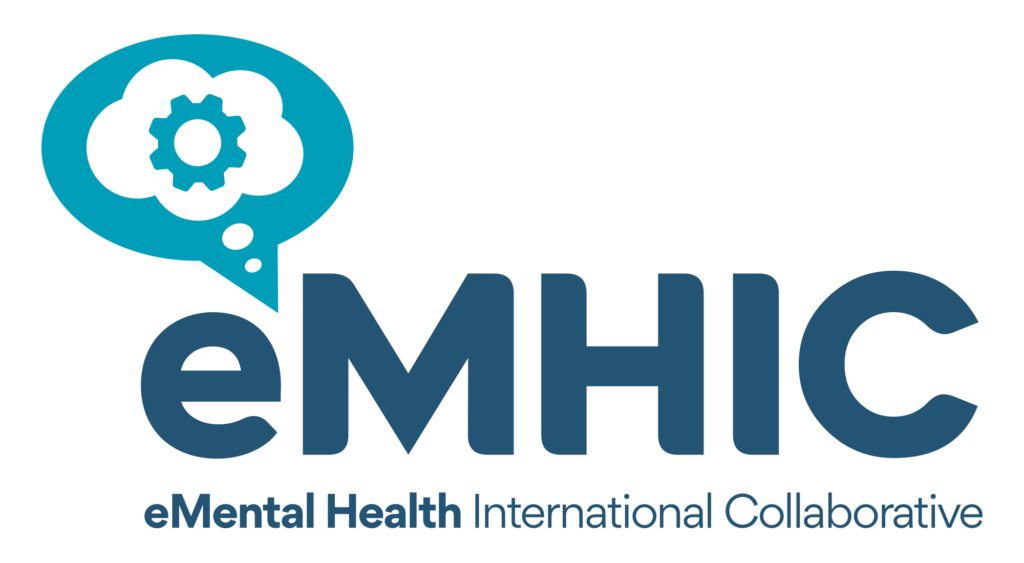Adapted from: NPJ Digital Medicine, volume 6, Article number: 11 (2023)
Abstract
Postpartum mental health conditions are a public health concern, affecting a large number of reproductive-age women and their families. Postpartum depression alone affects at least 14% of new mothers and their families. However, very little has been written about how advances in digital mental health can benefit women in the postpartum period, or how those advances may poorly serve this vulnerable population.
This manuscript takes a high-level view of the advances in different areas of digital mental health, including telehealth, apps, and digital phenotyping. In this comment, we explore ways in which digital interventions for postpartum mental health may help with connection to treatment, accessibility, agency, and ease of access.
We also note particular concerns for how digital postpartum mental health may encounter issues of low-quality resources, ethical considerations, and equity considerations. We provide suggestions for how to leverage the promise and avoid the pitfalls of digital mental health for postpartum women.
Key Takeaways
- “The Centers for Disease Control and Prevention (CDC) estimated that symptoms of postpartum depression, the most commonly studied postpartum mental heath condition, were found in about 13% of women with a recent live birth1. Globally, that number may be even higher for postpartum depression…2.”
- “Postpartum depression is also linked with an increase in mortality: suicide accounts for 1 in 5 deaths in postpartum women7.”
- “Digital mental health solutions may also help with accessibility for new mothers. Telehealth has received positive attention during the pandemic16 for expanding accessibility for postpartum women, who may find that telehealth relieves barriers such as finding childcare or not wanting to take young children into a medical facility. The flexibility of apps to supplement care could make treatment more accessible than telehealth alone, particularly since 85% of women own a smartphone17. “
- “…mental health apps can help deliver evidence-based interventions to women who are on a waiting list for a provider, augment traditional care so that fewer visits are needed, or even provide peer support or psychoeducation in place of traditional care.”
- “…digital phenotyping may offer a novel way to make it even easier for postpartum women to access mental health care. Digital phenotyping can use passive data (such as movement data or language content) to screen for mental health conditions without someone having to actively seek help. “
- “However, as new apps in this space continue to be rapidly developed25, providers may struggle to become proficient at navigating these resources, and postpartum women may be left to fend for themselves. We must remember that just because an intervention is convenient, or technologically innovative, doesn’t mean it works.”
- “To navigate the history of health disparities in women, particularly women of color31, issues of autonomy in postpartum digital phenotyping will need to be handled with significant care.”
- “Reproductive-age women, the primary stakeholders, should be involved in all stages of the development process. This can help combat the history of women’s disenfranchisement in medicine34. “
- “…effectively expanding postpartum mental health treatment to digital platforms calls for leveraging the strengths of academia and technology together. The LAMP platform, which is currently being piloted in a postpartum population, is an excellent model for how this can work well. LAMP is an open-source platform that can be customized for different conditions, allowing innovators to move fast without reinventing the wheel.”
References
- Bauman, B. L. et al. Vital signs: postpartum depressive symptoms and provider discussions about perinatal depression-United States, 2018. MMWR Morb. Mortal. Wkly Rep. 69, 575–581 (2020). Article Google Scholar
- Wang, Z. et al. Mapping global prevalence of depression among postpartum women. Transl. Psychiatry 11, 543 (2021). Article Google Scholar
- Slomian, J., Honvo, G., Emonts, P., Reginster, J. Y. & Bruyère, O. Consequences of maternal postpartum depression: a systematic review of maternal and infant outcomes. Women’s Health (Lond., Engl.) 15, 1745506519844044 (2019). CAS Google Scholar
- Aoyagi, S. S. & Tsuchiya, K. J. Does maternal postpartum depression affect children’s developmental outcomes? J. Obstet. Gynaecol. Res. 45, 1809–1820 (2019). Article Google Scholar
- Goodman, S. H. et al. Maternal depression and child psychopathology: a meta-analytic review. Clin. Child Fam. Psychol. Rev. 14, 1–27 (2011). Article Google Scholar
- Beck, C. T. The effects of postpartum depression on child development: a meta-analysis. Arch. Psychiatr. Nurs. 12, 12–20 (1998). Article CAS Google Scholar
- Lindahl, V., Pearson, J. L. & Colpe, L. Prevalence of suicidality during pregnancy and the postpartum. Arch. Women’s Ment. Health 8, 77–87 (2005). Article CAS Google Scholar
- Czeisler, M. É. et al. Mental health, substance use, and suicidal ideation during the COVID-19 pandemic—United States, June 24–30, 2020. MMWR Morb. Mortal. Wkly. Rep. 69, 1049–1057 (2020). Article CAS Google Scholar
- Hessami, K., Romanelli, C., Chiurazzi, M., & Cozzolino, M. (2020). COVID-19 pandemic and maternal mental health: a systematic review and meta-analysis. J. Matern. Fetal Neonatal Med. 1-8. https://doi.org/10.1080/14767058.2020.1843155 (2020).
- Mann, D. M., Chen, J., Chunara, R., Testa, P. A. & Nov, O. COVID-19 transforms health care through telemedicine: evidence from the field. J. Am. Med. Inform. Assoc. 27, 1132–1135 (2020). Article Google Scholar
- Nouri, S., Khoong, E., Lyles, C., & Karliner, L. Addressing equity in telemedicine for chronic disease management during the Covid-19 pandemic. NEJM Catalyst. https://doi.org/10.1056/CAT.20.0123 (2020).
- Tausch, A. et al. Strengthening mental health responses to COVID-19 in the Americas: a health policy analysis and recommendations. Lancet Regional Health Am. 5, 100118 (2022). Article Google Scholar
- Miller, L. J. et al. Now what? Effects of on-site assessment on treatment entry after perinatal depression screening. J. Women’s Health 21, 1046–1052 (2012). Article Google Scholar
- Byatt, N., Levin, L. L., Ziedonis, D., Moore Simas, T. A. & Allison, J. Enhancing participation in depression care in outpatient perinatal care settings: a systematic review. Obstet. Gynecol. 126, 1048–1058 (2015). Article Google Scholar
- SAMHSA. Behavioral Health Workforce Report. (SAMHSA, 2020)
- Brown, H. L. & DeNicola, N. Telehealth in maternity care. Obstet. Gynecol. Clin. North Am. 47, 497–502 (2020). Article Google Scholar
- Demographics of Mobile Device Ownership and Adoption in the United States. (Pew Research Center, 2019)
- Alcorn, K. L., O’Donovan, A., Patrick, J. C., Creedy, D. & Devilly, G. J. A prospective longitudinal study of the prevalence of post-traumatic stress disorder resulting from childbirth events. Psychol. Med. 40, 1849–1859 (2010). Article CAS Google Scholar
- Ayers, S., Bond, R., Bertullies, S. & Wijma, K. The aetiology of post-traumatic stress following childbirth: a meta-analysis and theoretical framework. Psychol. Med. 46, 1121–1134 (2016). Article CAS Google Scholar
- Baumel, A., Tinkelman, A., Mathur, N. & Kane, J. M. Digital peer-support platform (7Cups) as an adjunct treatment for women with postpartum depression: feasibility, acceptability, and preliminary efficacy study. JMIR Mhealth Uhealth 6, e38 (2018). Article Google Scholar
- Milgrom, J. et al. Internet cognitive behavioral therapy for women with postnatal depression: a randomized controlled trial of MumMoodBooster. J. Med. Internet Res. 18, e54 (2016). Article Google Scholar
- Insel, T. R. Digital phenotyping. JAMA 318, 1215 (2017a). Article Google Scholar
- Hahn, L. et al. Early identification of postpartum depression using demographic, clinical, and digital phenotyping. Transl. Psychiatry 11, 121 (2021). Article Google Scholar
- Brietzke, E. et al. Integrating digital phenotyping in clinical characterization of individuals with mood disorders. Neurosci. Biobehav. Rev. 104, 223–230 (2019). Article Google Scholar
- Feldman, N., Back, D., Boland, R. & Torous, J. A systematic review of mHealth application interventions for peripartum mood disorders: trends and evidence in academia and industry. Arch. Women’s Ment. Health 24, 881–892 (2021). Article Google Scholar
- Torous, J. B. et al. A hierarchical framework for evaluation and informed decision making regarding smartphone apps for clinical care. Psychiatr. Serv. 69, 498–500 (2018). Article Google Scholar
- Beery, A. K. & Zucker, I. Sex bias in neuroscience and biomedical research. Neurosci. Biobehav. Rev. 35, 565–572 (2011). Article Google Scholar
- Oakley, A. Essays on Women, Medicine & Health. (Edinburgh University Press. 2019)
- Hill, R. Synthesis of Research on Disproportionality in Child Welfare: An Update. (Casey-CSSP Alliance for Racial Equity in the Child Welfare System, (2006)
- Flo Health, Inc. Federal Trade Commission (Flo Health, Inc., 2021).
- Cornelius, L. J., Smith, P. L. & Simpson, G. M. What factors hinder women of color from obtaining preventive health care? Am. J. Public Health 92, 535–539 (2002). Article Google Scholar
- Sederer, L. I. The social determinants of mental health. Psychiatr. Serv. (Wash., D. C.) 67, 234–235 (2016). Article Google Scholar
- Thompson, T. M. et al. Racism runs through it: examining the sexual and reproductive health experience of Black Women in the South. Health Aff. (Proj. Hope) 41, 195–202 (2022). Article Google Scholar
- Malterud, K. Strategies for empowering women’s voices in the medical culture. Health Care Women Int., 14, 365–373 (1993). Article CAS Google Scholar
- Ramphos, E. S., Kelman, A. R., Stanley, M. L. & Barrera, A. Z. Responding to women’s needs and preferences in an online program to prevent postpartum depression. Internet Interv. 18, 100275 (2019). Article Google Scholar
- Bilden, R. & Torous, J. Global collaboration around digital mental health: the LAMP Consortium. J. Technol. Behav. Sci. 7, 227–233 (2022). Article Google Scholar




